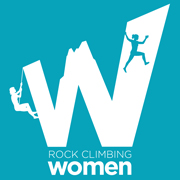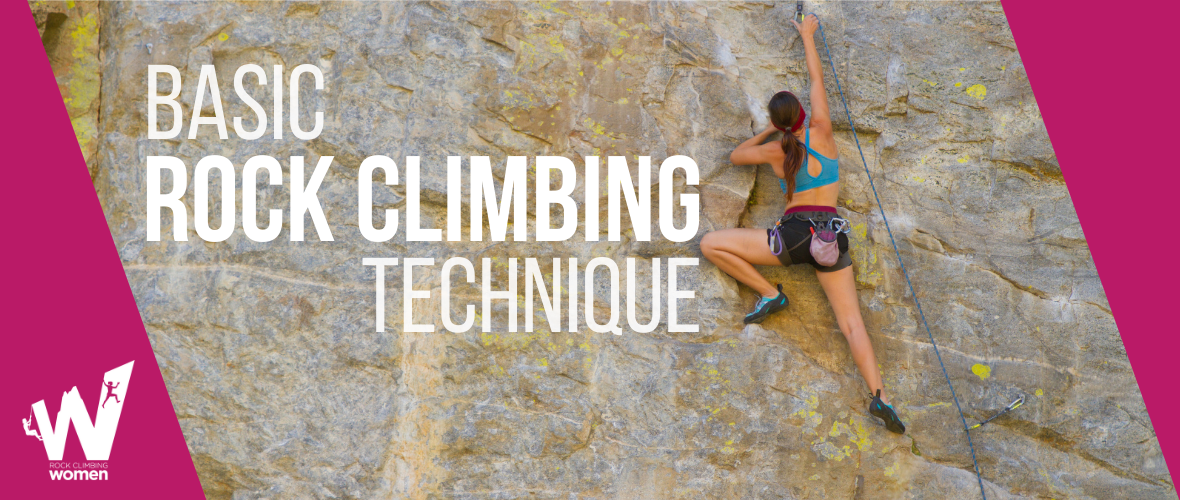Practice makes perfect when you’re breaking into the rock climbing game. It’s an addictive sport that naturally builds muscle, evokes a zen-like focus, and teaches balance. Ever since the early 1990s, rock climbing has changed and evolved into a full-on Olympic sport.
Most new climbers try to power up the wall using arm strength, but fall short (literally). To gain experience rock climbing means to show up time and time again with new mechanics and techniques. You’ll need to find your balance. It’s a constant ebb and flow of making your body positioning work for you.
As you tie-in to this exhilarating new sport, prepare to reach new heights with our tried and trusted basic rock climbing techniques.
You’ll be a natural Lynn Hill before you know it.
A Rock Climber’s Quick Vocabulary Guide
This is a beginner’s guide, so we’re going to skip the technical language. However, here are a few key terms so you stay grounded in this introductory guide.
- Smearing – pressing the sole of your climbing shoe to the wall/slab to create friction for vertical advancements
- Edging – placing your soles on narrow edges of the rock’s surface. Your whole foot will not fit on such footholds
- Reading the route – surveying the parts of the climbing route you can see to determine the best flow of movement
- Flagging – opening your hips and extending your leg out in one direction. For example, if you are flagging with your right leg, you would bring the left hip into the wall to maintain balance
Basic Rock Climbing Techniques for Beginners
You’re planning to climb outside on your first ever project, and we’re super stoked for you!
Whether you’re tying in for lead climbing, sport climbing, or a top-rope route, check your knots and map your moves. Is your climbing harness fully secured? Is your figure 8 dressed? Chalked up?
Climbing Technique #1: Be Deliberate and Efficient.
You’ll know you leveled up your climbing ability if you can scale the wall with minimal effort. As you chalk up for the ascent, map your route accordingly. Every move is energy spent and you’ll want to know proper places for footholds, resting points, and where you’ll be making riskier moves.
Don’t burn out early; map out:
- Footholds – Check the best places to put your feet. Will you need to smear or edge on these footholds? What do your handholds look like when you’re on those holds? Will you need to flag/drop a knee to shift weight?
- Resting points – The best places to rest are those that allow your weight to be on your feet entirely. Take this time to shake the lactic acid buildup from your arm muscles one by one and plan your upcoming moves. If you’re bouldering, the resting point is all up to you. When you have a belay, you can have them “take,” also known as pulling the slack out of the rope, so you can hang on the line for a quick break.
- Deliberate moves – It’s a dance, not a moshpit. Try not to fling yourself up the wall with dynamic moves unless needed. The more time you spend questioning your moves on the wall, the more energy you waste.
- Hip positioning – A common rookie mistake is to maintain a square-hip stance. It takes your body away from the wall, creating more work for you. Keep your hip into the wall at all times to allow you to lean with straight arms. If you’re reaching for a handhold, having one hip pushed against the wall decreases your chances of peeling off. You’ll have a better gripping angle that reinforces your place on the slab.
Climbing Technique #2: Utilize Your Feet.
The rock climbing technique dogma is essentially to keep your arms feeling weightless and place the burden on your feet. There are limitless ways to describe positioning your climbing shoes on a foothold, but the main two you’ll hear in the rock climbing gym are edging and smearing.
99 Boulders best compares these two footwork moves to walking up stairs (edging) and walking up a ramp (smearing).
- Edging – Using the inside or outside edge of your climbing shoe sole, stand on a mere silver of the wall and find your balance. Which direction do you aim to go?
Focus on your hips in this move, they are responsible for directing your body’s movements with the rock wall. Most climbers will lace up their stiff shoes if they’re preparing to ascend an edgy slab climb. You’ll usually be standing on the edge of your shoe, beneath your big toe.
For a backstepping move, rely on the outside corner of your soles (under the little toe), to feel more secure.
- Smearing – It might not be an edge, but we make it work. Smear when the gradient is less steep than the rest of the surface. Remember, you’re busy creating friction, and making those shoes stick to the slab gives you the reinforcement you need for your vertical ascent.
Keep that heel low. The more foot surface you have on the foot chip, the better. Also, don’t second guess yourself and get shifty. The quickest way to swing off the slab is by fudging your foot placements.
Climbing Technique #3: Be About Balance
While novice climbers depend on upper body strength to launch them up the wall, experienced climbers know it’s a balancing act.
When I first started training in basic rock climbing techniques, I would put a quickdraw on my belay loop. This showed me how I surveyed my balance in different climbing positions. I would aim to keep the quickdraw in the middle of my legs and hold this center of balance for every move and shift I would make on the wall.
No rock climber is the same. We all rock out with different strengths and weaknesses. Some of us look at a crimp and want to cry, while others find them to be their favorite holds on the slab. Find what works for you.
Climbing is a vertical ascent, yes. But, that doesn’t mean your climbing technique needs to be parallel. Drop a knee, flag a leg, sway your hips, and get froggy with it.
Bonus tips:
- Counter pressure is everything! Push your foot in the opposite direction of your handhold to suction you to the wall.
- Your body is your counterbalance. Lean like your life depends on it.
- Practice outside of the rock. Check these climbing exercises for balancing improvement.
- Yoga is your best friend. Always, always, always warm up before you get on the wall. Stretching your muscles beforehand will mitigate sprains and tendon tears in your body.
It’s All Up from Here
It’s safe to say that the climbing community is one of the most inclusive sports communities in existence. Every climber genuinely wants others to succeed. Therefore, if you ever need help with beta or a catch, just shout and you’ll have a solid climbing partner in seconds.
The world of climbing is vast; from deep water soloing, free climbing, and adventuring, there’s a niche for everyone.
Don’t lace up your Butoras without taking a glance at our rock climbing checklist first!
Remember, everyone starts somewhere. Alex Honnold didn’t free climb El Capitan overnight. Watch your feet, check your balance, and save your energy with these basic rock climbing techniques.
Climb on!
McKenzi Taylor founded Rock Climbing Women in 2013 after moving to a new city as a new climber seeking more climbing partners (and new friends!). Since her first taste of climbing in Spearfish Canyon, SD, McKenzi has been at the rock face seeking and sharing the thrill of climbing. She credits the support of a consistent climbing partner and community as the motivation to continue developing her skill, whether it’s trad, sport climbing or bouldering. A full-time business owner and mother, McKenzi’s on a mission to get her kids outside and learning to adventure alongside her.


